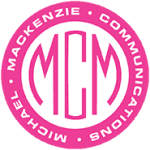It seems silly that in 2022, graphic design is still mostly limited behind knowledge barriers and clunky programs like InDesign, or Illustrator. Luckily, that is changing.
Canva is a free-to-use online design platform that is set up for user ease. It effectively cuts out the “thinking work” of design and aims to let you use your eyes and intuition to maximum effect.
Using Canva, you can make short videos, graphics for the web, animated GIFs, and more.
Step 1: Format Image Size
One of the most common trip ups for any designer is sizing your images correctly so that the formatting that happens on social media sites will display your image as intended. Canva takes all the guess work out of this by keeping a library of post type templates. Just search for ‘Facebook Banner’ or ‘LinkedIn Post’, and you’re up and running.
Step 2: Select a Background
Canva’s has a stock library full of different backgrounds for your project. These can be short videos, animations, or static colors or photographs. I have found the best workflow to be selecting my background first and then building my image on top of it.
Step 3: Incorporate Elements of Design
Canva gives users the ability to upload their own images to use in their designs, in addition to providing access to their extensive library of templates to inspire your creativity. I have found the Upload function is mostly useful when adding company logos to posts or when a client requests to use a particular photograph. To upload your own image, simply use the ‘Upload’ functionality, found in the sidebar menu on the lefthand side of the Designer.
Once you have uploaded an image, Canva will automatically analyze the colors in the image and add them to your color swatch to use elsewhere in your design. Goodbye Hexcode!
Maybe you do not have your own images to use. In this case, Canva has a searchable library of stock illustrations, video, and even audio, anything from flowers to doctors, that are accessible at no charge, with the Canva Pro subscription. Also note that some templates for each kind of post are also paywalled off behind the Pro subscription.
To use Canva stock elements, select the ‘Elements’ tab from the lefthand sidebar in the Designer.
Step 4: Adding Text
Canva has all the basic text tools you would expect to find in any word processor, a function to resize and change fonts, and well as a library of professionally designed generic, but editable text elements ready to use. To use Canva text elements, select the ‘Text’ tab from the lefthand sidebar in the Designer, or click on existing text in your template.
Step 5: Exporting for Posting
Canva allows downloading your projects in 5 file types.
You can download as .png, .jpg, .pdf, .mp4, .gif., and if you decide to spring for that Pro membership, you gain the ability to download the vectors of your image as a .svg file that will not pixelate no matter the size or zoom. Additionally, Canva has built in functionality to post directly to social accounts by signing into each one in their platform. You can set this up by clicking ‘Post to [social network]’ and filling in the prompts, rather than the download arrow.
While Canva’s stock libraries and formatting constraints might stifle some potential for creativity, if you are not a veteran graphic designer, and most of us are not, it is head and shoulders quicker and easier to get up and running using Canva than it would be to learn to do similar work on other, more expensive platforms.
Best of luck on your design adventures!
This post is courtesy of MMC Media Production Manager Avery Lane

